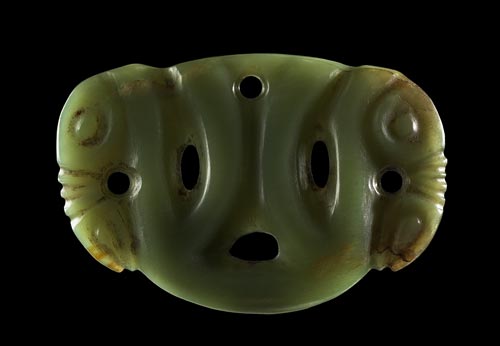The language of pounamu speaks through its flowing lines and carefully chosen forms. Each curve, each polished surface, holds a story. Some shapes and meanings echo through time, passed down through generations of Māori carvers. Others are more recent expressions, yet still draw inspiration from the land and its traditions. Whether the comforting curve of a roimata or the strength embodied in a toki, these carvings are more than beautiful objects – they are whispers of history and echoes of the natural world.
Koru – Spiral
The Koru has two aspects, it represents new beginnings, growth, movement, change, and being open. It can also represent protecting, connection with others, nurturing, and when interlocked with other Koru it represents loving relationships and family/whanau.
The Koru is a shape found in much of nature. The significant place for me is in the fern frond. It is the shape the frond first takes as it emerges from the center of the plant surrounded by the mature fronds and nestled amongst other young fronds. As it grows it slowly unfurls itself as it fully matures. You can see this in the images below of the Silver Fern, which is called the Koru.
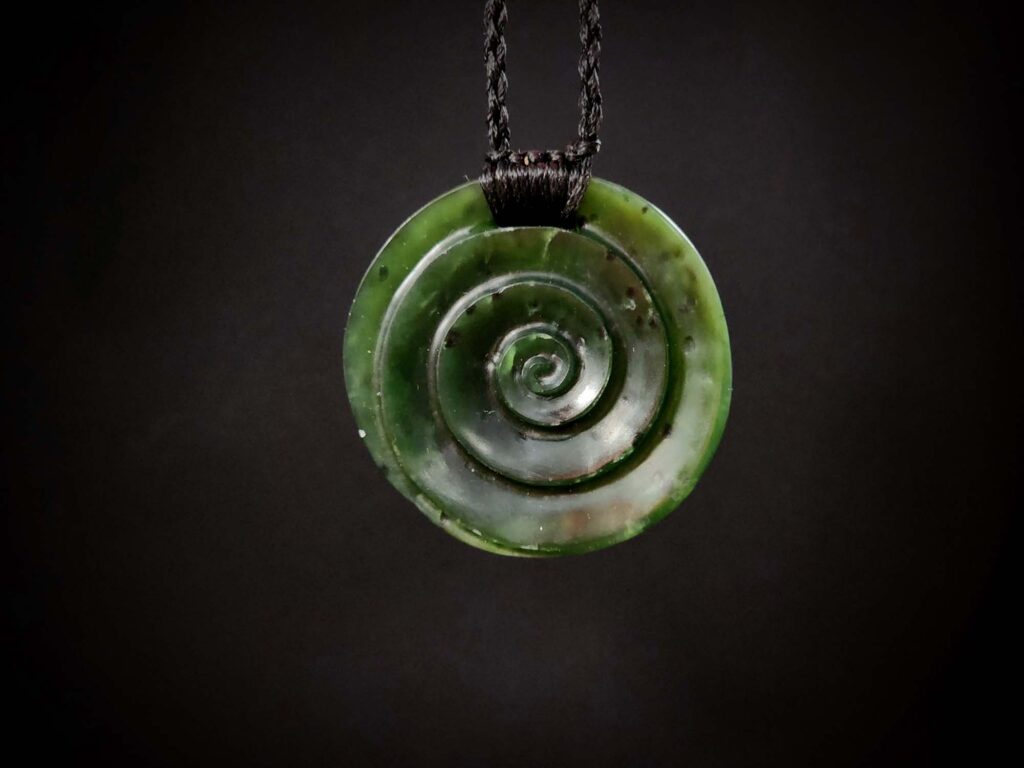
Porohita – Circle
The circle is a symbol of the journey of life. It represents discovery, choices, and centers the wearer in the present while acknowledging the past and the future.
It also a shape that represents the cyclical nature of many aspects of life such as health, relationships, gardening, seasons, growth, energy, wilderness.
It can be used to represent being centered, present, and focused especially when relating to people.

Hei Toki
The Toki was a originally a tool used by Māori. The pounamu was painstakingly shaped into heavy and robust forms and could be either lashed to a handle or held in the hand. They were used for cutting down trees, carving out canoes/waka, or carving designs into meeting houses/marae.
A finer version with a more delicate Toki lashed to an elaborately carved handle were reserved for powerful cheifs/rangatira. These were used for ceremonial purposes, they are called ‘Toki Poutangata’.
The modern Hei Toki, worn around the neck as a pendant with a traditional lashing, represents foremost strength, authority, and leadership. It is can also a symbol of power, courage, wisdom, determination, self-control, and focus. (Shapes and Meanings)
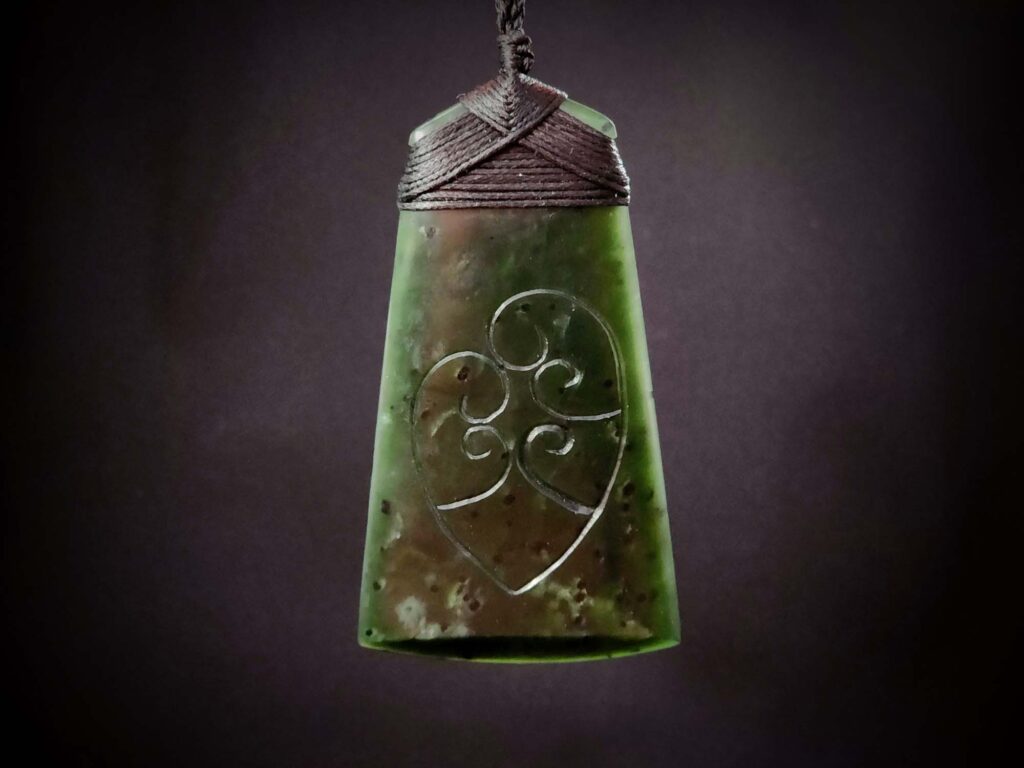
Roimata – Tear Drop
Wearing a Roimata or Tear Drop shaped, also called kuru, pounamu pendant is about comfort and caring for people. It represents shared emotions, compassion, empathy, confidence, solidarity, reassurance.
It is a symbol that connects with emotions and the heart.
Roimata were traditionally worn as an earring. They were symbols of high status and reputation. They still are as well as often being carved as pendant with a detailed lashing.
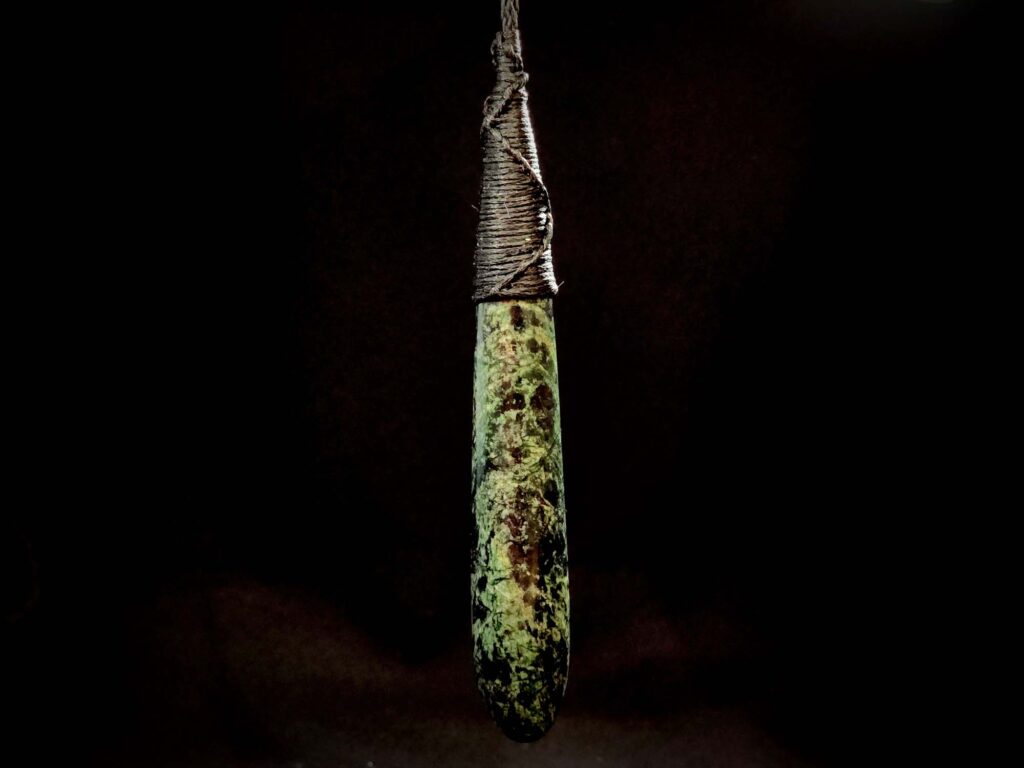
Hei Matau
The stylised fish hook has strong connection with the ocean. It represents abundance and prosperity particularly in the realm of providing protection when travelling, even more so when travelling over water.
It is a design that has deep respect of the ocean and also conveys symbolism of strength, determination, good luck, fertility, good health, and peace. (Shapes and Meanings)
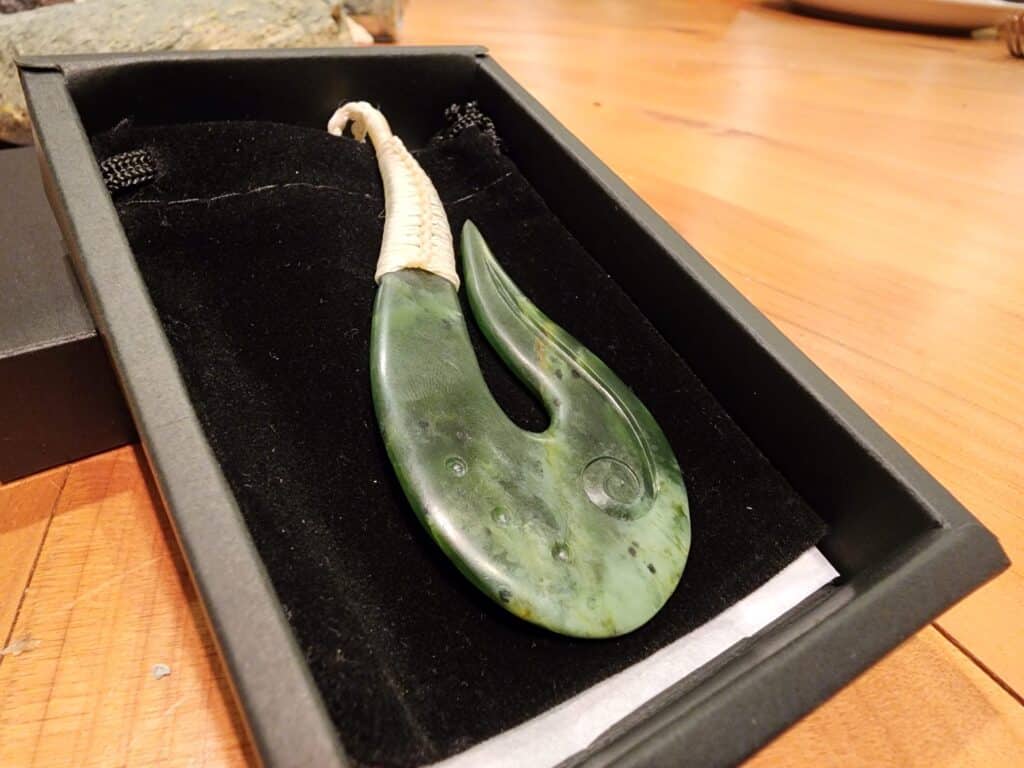
Niho – Tooth
Niho, meaning “teeth” in Māori, holds a potent symbolism that often draws inspiration from whales and sharks – powerful creatures revered in Māori culture. The niho design can take many forms, from stylized carvings to actual teeth incorporated into adornments.
Traditionally, niho made from whale or shark teeth represented strength, resilience, and leadership. These teeth were also used in weapons, adding a sense of ferocity and determination. However, the niho also carries associations with peace and tranquility, reflecting the duality of the natural world and the balance of power.
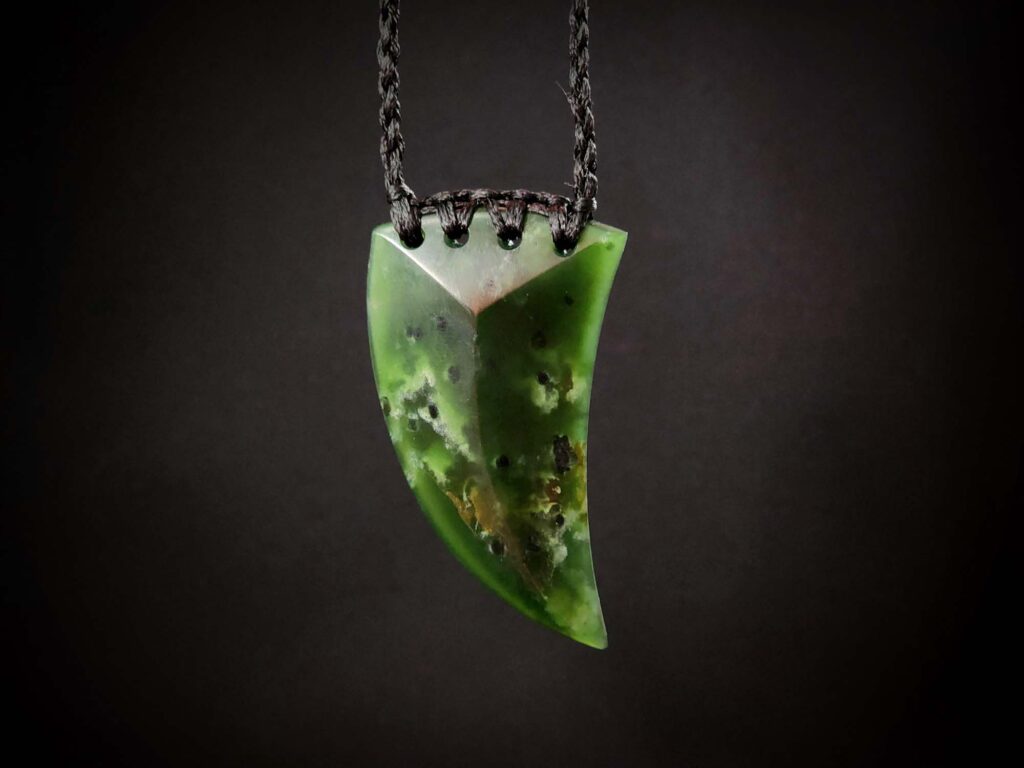
Manaia
The manaia is a mythological being in Māori tradition, deeply rooted in symbolism and spiritual significance. Its most striking feature is its hybrid form, blending elements of a bird, human, and reptile. It features a prominent beak, often curved or elongated, and is usually depicted in profile to highlight its distinctive shape. The body can be slender or rounded, sometimes with hands or claws, while the tail often curves into elegant spirals or intricate patterns.
Primarily, the manaia is a kaitiaki (guardian) and messenger between the earthly realm and the spirit world. Its combination of elements represents a balance between sky, land, and sea. The manaia is believed to ward off evil and protect wearers from harm.
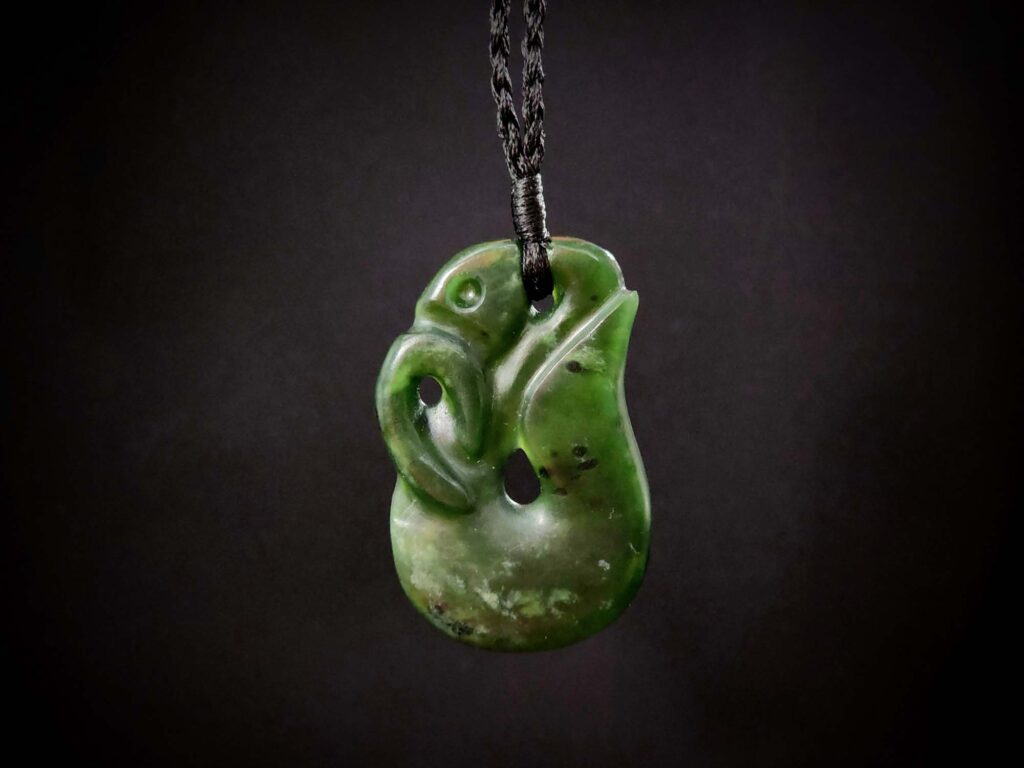
Hoe – Paddle
The hoe is a traditional Māori paddle used to propel waka. This form draws a direct connection to the waka (canoe) and the act of paddling, emphasizing the concepts of teamwork and shared purpose. The hoe’s shape reflects the collaborative effort needed for success in a team environment and the importance of working together.
Beyond its practical use, the hoe holds significance in Māori culture as a symbol of unity and collective achievement. It represents the connection to Tangaroa (God of the Ocean), while also embodying the values of hard work, cooperation, and and pulling in the same direction.

Hei Tiki
The hei tiki is a stylized human-like figure with an oversized, tilted head and prominent eyes, symbolizing intellect, curiosity, and spiritual sight. It represents ancestral connection, fertility, and protection, and is a deeply cherished taonga within Māori culture. Traditionally carved from pounamu, contemporary interpretations may explore other materials and forms while respecting the rich tradition of the hei tiki.
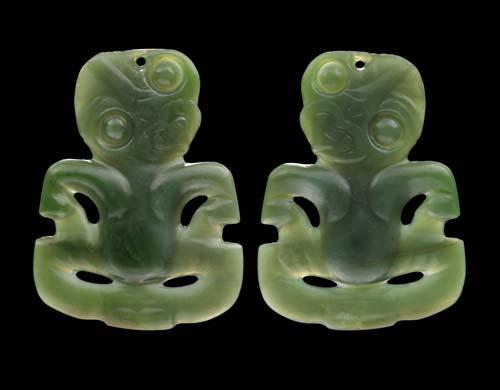
Koropepe
The koropepe features a coiled or spiral form, reminiscent of a young fern frond unfurling. This form also evokes the mythical koropepe, an eel-like creature revered in Māori tradition. Eels were a significant food source for pre-European Māori, and the koropepe symbolizes not just growth and new beginnings, but also sustenance and the bounty of the natural world.
It embodies the wisdom and guardianship associated with an elder, a grandfather figure offering spiritual protection and guidance. The spiral form can also be seen as representing the cyclical nature of life, death, and rebirth, with the koropepe acting as a protector on this journey.
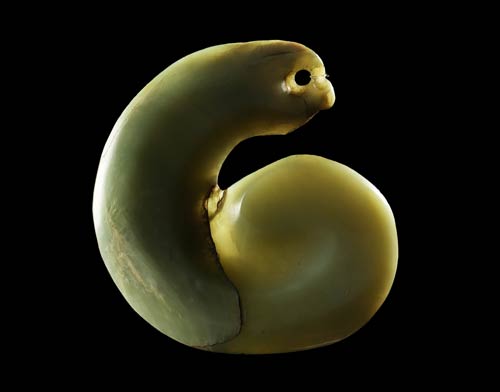
Mere – Patu
The mere or patu is a traditional Māori hand club designed for close-quarters combat. The mere is a short, broad-bladed weapon with a sharp edge, often crafted from highly valued pounamu. Its strength and compact form make it a formidable weapon, capable of delivering powerful blows.
Beyond the physical use, the mere held deep cultural significance. They were often passed down as treasured taonga, imbued with the mana (power and prestige) of previous warriors. The mere was associated with status and leadership, further emphasizing its power as a symbol of strength and authority.

Whale Tail
The whale tail pendant depicts the graceful arc of a whale’s tail as it dives, often with subtly curved edges or sweeping lines. It evokes the strength and respect associated with whales in Māori culture. Whales are seen as powerful and intelligent beings, often considered guardians or ancestral figures. The pendant embodies the whale’s impressive physical strength, its swiftness in navigating the vast ocean, and the guidance and protection it offers voyagers on their journeys. Additionally, the whale tail is considered a symbol of good fortune and success.
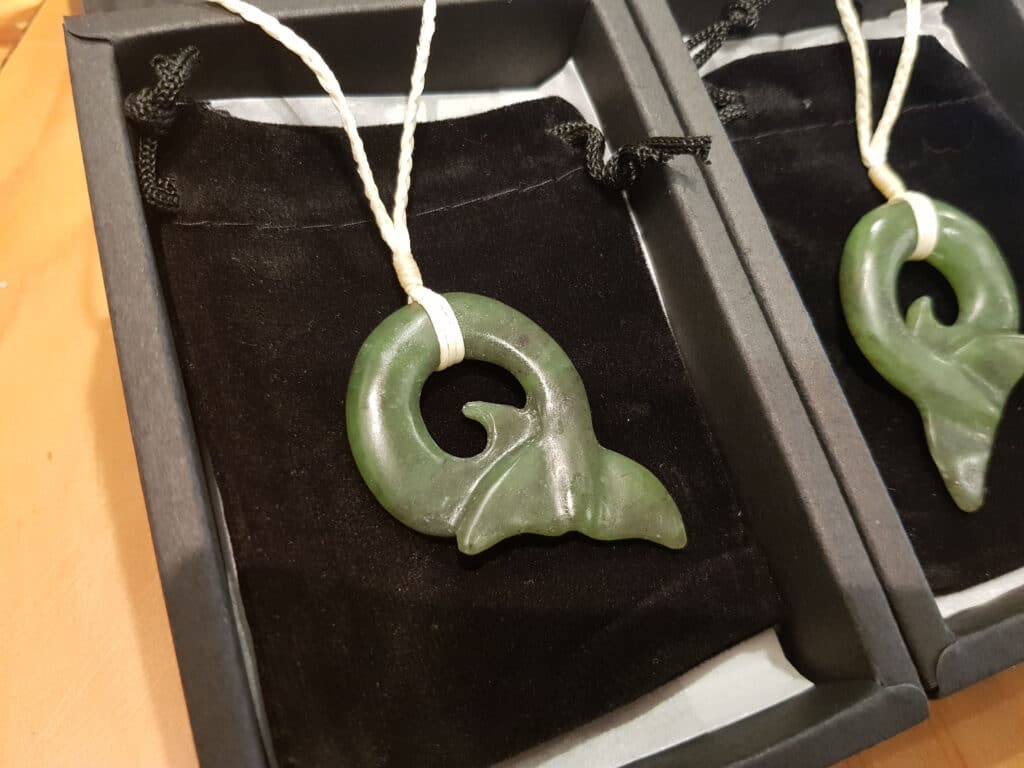
Breastplate
The breastplate often takes a distinctive crescent or triangular shape. This form suggests a shield, evoking its protective function. Suspended from a neck cord by two attachment points, it rests close to the heart, symbolizing inner strength and resilience. The coolness of the material against the skin offers a sense of being grounded and connected to the earth.
This type of breastplate is a potent symbol of protection for the wearer, both physically and spiritually. Its solid form represents an unyielding spirit, a reminder of ancestral strength, and the ability to withstand challenges. The breastplate serves as a potent reminder of personal power and the ability to safeguard one’s values and well-being.
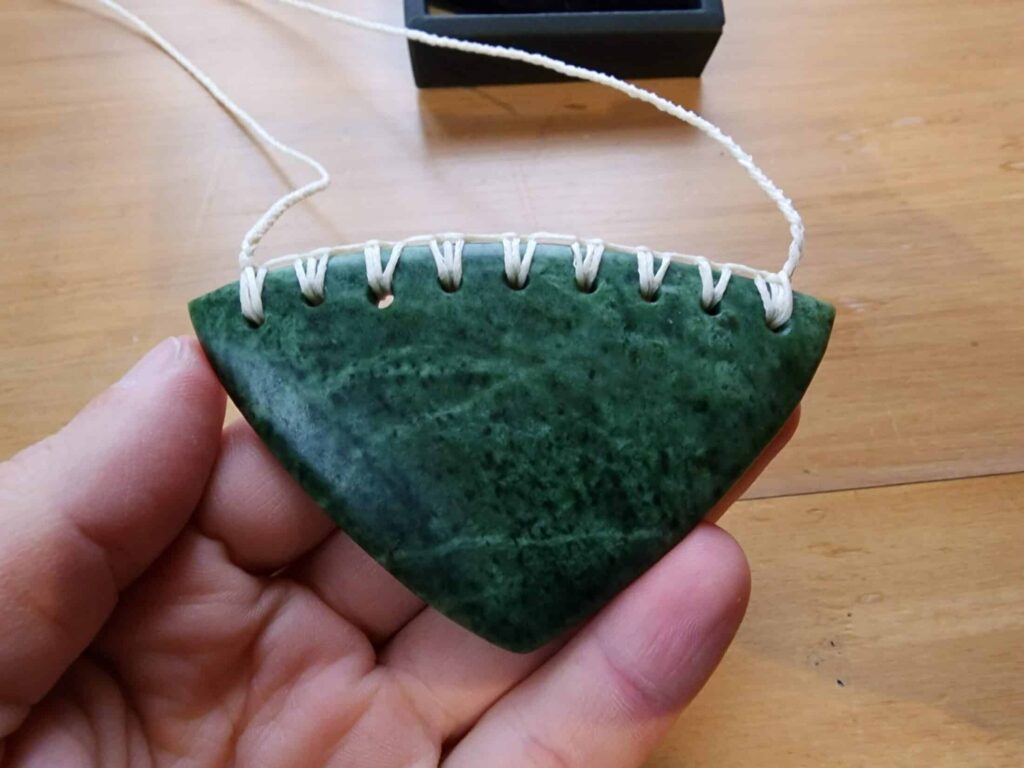
Ripi – Knife
The ripi is a traditional Māori knife. With its origins in everyday practicality, its form is often simple, featuring a curved or straight blade crafted from pounamu, obsidian, or other sharp materials. As a practical tool, the ripi was used for a variety of purposes, including food preparation and carving.
One of its most significant uses was for cutting the umbilical cord after a child’s birth. In modern times, ripi are often crafted specifically for this purpose, later transformed into a taonga (treasure) for the child. This imbues the ripi with deep meaning. It becomes a tangible symbol of the child’s connection to their whenua (land and birthplace) and a reminder of their origins.

Kapeu
The kapeu features a softly curved lower edge, while the upper part can be straight or slightly convex. A single hole near the top allows it to be suspended from a cord and rest against the wearer’s chest. Traditionally crafted from pounamu, bone, or occasionally wood, the kapeu was a sign of high rank and status within Māori society. It embodied the mana (prestige and power) of the wearer, and was likely reserved for chiefs and important individuals. The act of wearing a kapeu signified leadership, authority, and the ability to protect and provide for one’s people. Kapeu made from pounamu were sometimes used by traditional healers, believed to soothe the gums of teething infants.

Poria – Kākā Leg Ring
The pōria kākā is a small, oval-shaped ring made from pounamu or bone, with a central hole to place on the leg of a kākā parrot. These parrots were used as decoys to attract wild birds, with the pōria kākā keeping them tethered. When not in use, the intricately carved pōria kākā might be worn as a pendant or earring. The skill involved in carving them, and their connection to successful hunts, made them valued heirlooms passed down through generations. They represent success through hunting, as well as a strong connection with animals, and in particular birds.
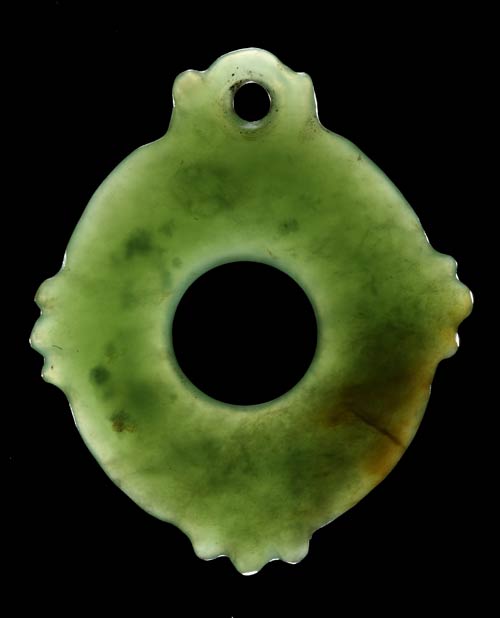
Pekapeka – Native Bat
The pekapeka is a traditional Māori design with rich symbolism. While its name references the native New Zealand bat (pekapeka), it could also represent two intertwined bird forms. The curves and angles of the design can evoke the fluttering movement of both bats and birds. This duality highlights the connection between the earthly realm and the spirit world.
Beyond its form, the pekapeka is imbued with deep meaning. It is seen as a kaitiaki (guardian), offering protection and guidance to the wearer. The bat’s nocturnal nature and association with shadows further adds to the sense of mystery and power surrounding this symbol.
